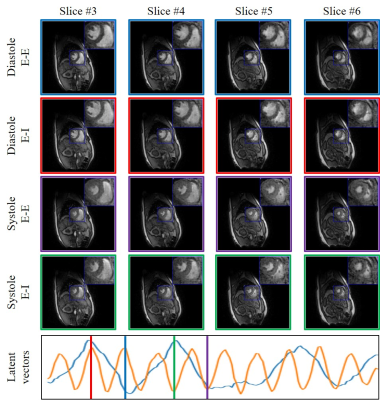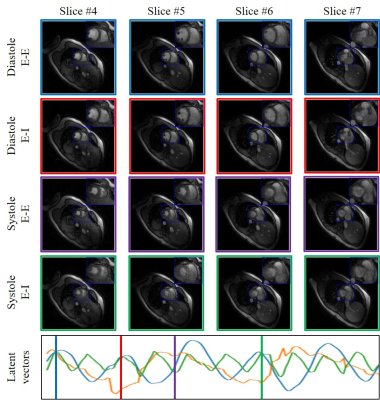Qing Zou1, Abdul Haseeb Ahmed1, Prashant Nagpal1, Rolf Schulte2, and Mathews Jacob1
1University of Iowa, Iowa City, IA, United States, 2GE Global Research, Munich, Germany
1University of Iowa, Iowa City, IA, United States, 2GE Global Research, Munich, Germany
This work proposed a scheme for the Alignment & joint recovery of multi-slice cine MRI data
using deep generative manifold model. The proposed scheme can significantly reduce the scan time.

Fig.
2. Demonstration of the
framework of the proposed scheme on the first dataset. We plot the latent
variables of 150 frames in time series on the first dataset. We showed four
different phases from 4 different slices that are reconstructed in the time
series: systole in End-Expiration (E-E), systole in End-Inspiration (E-I),
diastole in End-Expiration (E-E) and diastole in End-Inspiration (E-I). The
latent vectors corresponding to the four different phases are indicated in the
plot of the latent vectors.

Fig. 3. Illustration of the framework of the proposed
scheme on the second dataset. We plot the latent variables of 150 frames in
time series on the first dataset. We showed four different phases from 4
different slices that are reconstructed in the time series: systole in
End-Expiration (E-E), systole in End-Inspiration (E-I), diastole in
End-Expiration (E-E) and diastole in End-Inspiration (E-I). The latent vectors
corresponding to the four different phases are indicated in the plot of the
latent vectors.